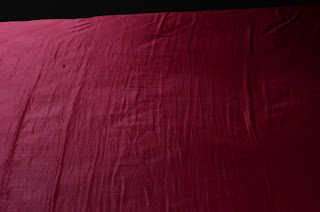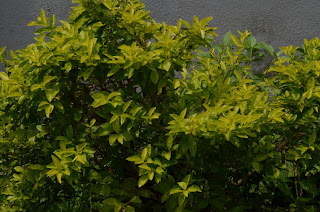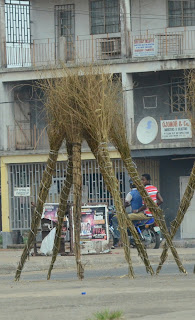This next exercise on color relationships is to produce one photograph for each combination pf primary and secondary colours
 |
| Image 1: 50mm,ISO 800 ,F/2, 1/200 |
This was taken in covent garden, London and what attracted me to the man was his costume. Although blue as a primary color dominates the subject, the presence of other secondary colours adds to the attraction.While the background of the picture has a shallow depth of field because my lens was wide open at f/2, it shows additional primary/secondary combination of red and green on the plastic dummy.
 |
| Image 2:ISO 1250,300mm,f/25,1/160 |
The combination of green and pink in image 2 above serves to highlight primary and secondary color combinations. Pink is not exactly one of the primary or secondary colours.It is considered to be a tint of red and according to wikipedia, most variations of pink lie within red, white and magenta colors.But its presence in this picture tends to pin the viewers attention to the picture.. I cropped this to get rid of an electric pole standing in between . I have become very conscious of my compositions ever since the tutor drew my attention to it. Composition is important and am trying very hard to make it second nature any time i put my eyes on the viewfinder.
 |
| Image 3: ISO 800,50mm,f/7.1,1/160 |
The blue and red colors of school children's jackets caught my attention. There are two elements of composition at play here,namely color and line. Though the composition is not too perfect, the the colours on their jackets appear to compliment each other strongly.
In Michael Freemans The Photographers Eye,p.120, color relationships are discussed with the author emphasizing on treating harmony in the sense of pleasing acceptable relationships. One being complementary harmony (hue across the color circle), and the other being harmony of similarity (hues from the same sector of the color circle). The author mentions that in successive contrast, if you stare at colored patch for at least thirty minutes and then shift gaze to a blank area of white, you are likely to see an after image in the complimentary color- the opposite across the color circle. A similar though less dramatic effect is seen when colors are side by side in which the eye tends to compensate, while in the color circle, mixing two opposites produce a neutral.
 |
| Image 4: ISO 2500,300mm,f/11,1/2000 |
Image 4 is for the second part of the exercise in which am to produce images featuring appealing color images. Well the agama lizard pictured above caught my attention. With its distinct blue color in between yellows. Agama is a long-tailed, insect-eating lizard of the genus Agama. They can be found in many sizes and are widespread in sub-saharan africa.





























